#vostok 1
Text
YURI FACT: Did you know that they sent yuri to space in 1961?

77 notes
·
View notes
Text
One of my favourite spaceflight facts is that, due to some heavy technicalities on what the universally accepted definition of an astronaut is, and the intense secrecy surrounding the Soviet Union at the time, the entire Vostok program, AKA the thing that first took humans into space, technically doesn't count and everyone just agrees to ignore that.

Submitting my claim that Vostok is actually the cutest spacecraft ever, which is an entirely normal statement.
When they sat down and defined what counts as a successful manned flight, part of the requirements included the astronaut(s) landing in the vehicle. But Vostok didn't do that. Instead, the Vostok cosmonauts ejected from the vehicle after re-entry and parachuted to the ground separately. This continued until the later Voskhod missions, where they ripped out the ejector seat so they could fit more guys inside (and on the second one, one guy and an inflatable airlock so one of them could do the first spacewalk), and put in a rollcage so that landing inside the vehicle wouldn't turn them to goo.
But by the time Voskhod 1 blasted off from Baikonur, all of the Mercury flights had already been flown, so this means that, according to the rules, America technically completed the first manned space flights.
Another technicality was added to the list a couple of years back, when the guys that make the rules futzed with said rules in order to deny Jeff Bezos and Richard Branson astronaut status, because fuck 'em. Now, in order to be an astronaut, you have to actually do something on the flight, otherwise you're just a passenger. And many of the Vostok flights were indeed more like passengers than crew. The Vostok spacecraft is pretty much a big satellite with a passenger compartment and a re-entry module, and it's fully automated.
So why didn't these technicalities get called out? The USA and USSR were never shy about trying to embarrass each other, or make each other look foolish on the world stage. One of the biggest reasons why we know the Moon Landing Conspiracy Theory is total stupidity is that the USSR congratulated NASA on the successful landing, because if it had been recorded on a soundstage in Area 51, the Soviets would've been the first to call bullshit.
Well, part of it is just that the Americans didn't know about the specifics of the Vostok program at the time. Whereas the American space program was a very public affair with cheering crowds showing up to watch every launch, the Soviets were much, much more clandestine than that. Baikonur is in the middle of the Kazakh desert, and the Soviets were keen to lie about anything that went wrong.
When their attempt at a moon rocket, the N1, endured four successive failures on launch, mostly caused by the Soviets lacking the funding and the facilities to properly test the thing, and instead just had to launch fully built rockets and hope they worked, the Soviets simply scrapped the last two and declared that they'd never intended to go to the Moon and were all about Earth orbit instead.

The N1 was actually more powerful than the Saturn V, but because it never reached operational status and the Soviets preferred to pretend it didn't exist, the Saturn V remained the world's most powerful rocket until Artemis 1 flew last year. A similar situation is happening now, with SpaceX's Superheavy being more powerful than the SLS, but also being basically a giant bomb at the moment.
Most Americans had no idea how Vostok worked, and didn't even know what it looked like. They didn't get to see what a Soviet spacecraft actually looked like up close until the Apollo-Soyuz mission in 1975.

Behold, the setting for the most expensive handshake in history.
By the time the full details came out, the world had known that the Soviets did it first for decades, and challenging that doesn't really do much for anyone besides the people that want to go "Um, ackchully" about everything.
Additionally, the rules weren't even written yet at the time, so there's even less reason to start changing shit up now. Vostok might be technically breaking the rules, but nobody cares, and downplaying the immense technical achievements of Sergei Korolev, Yuri Gagarin, and everyone else that worked on the early Soviet spaceflights on account of a rules quirk that wasn't even written yet is just kinda dumb.
(Random sidenote, Korolev was the chief designer of much of the USSR's early spacecraft, including the R7 rocket that carried both Sputnik and Vostok into space, and still carries some of the Soyuz flights to this day. And, like pretty much every major achievement of the USSR, he wasn't Russian. He was, in fact, Ukrainian.)
#Vostok#Vostok 1#Yuri Gagarin#Sergei Korolev#Apollo#Soyuz#Apollo-Soyuz#N1 Rocket#R7 Rocket#Voskhod#Space Flight#Space Travel#Space#History
52 notes
·
View notes
Text
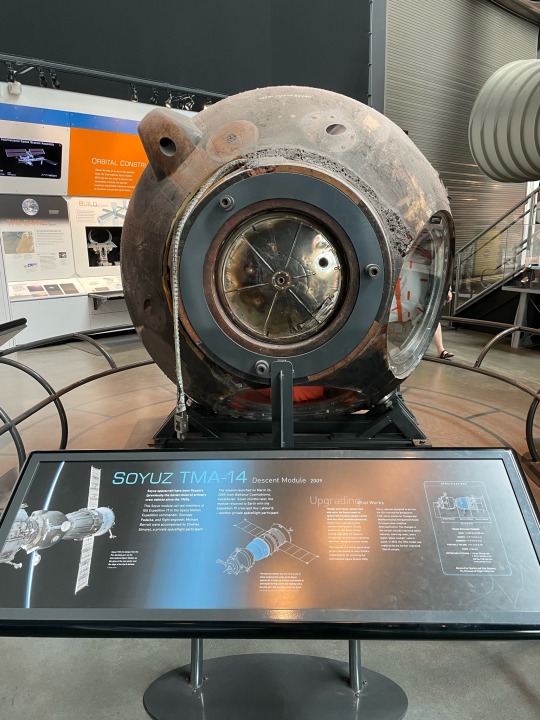
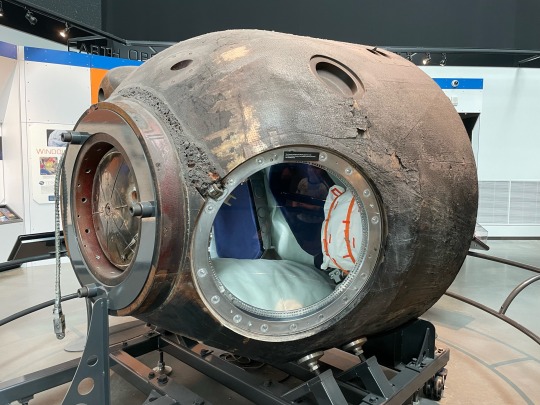

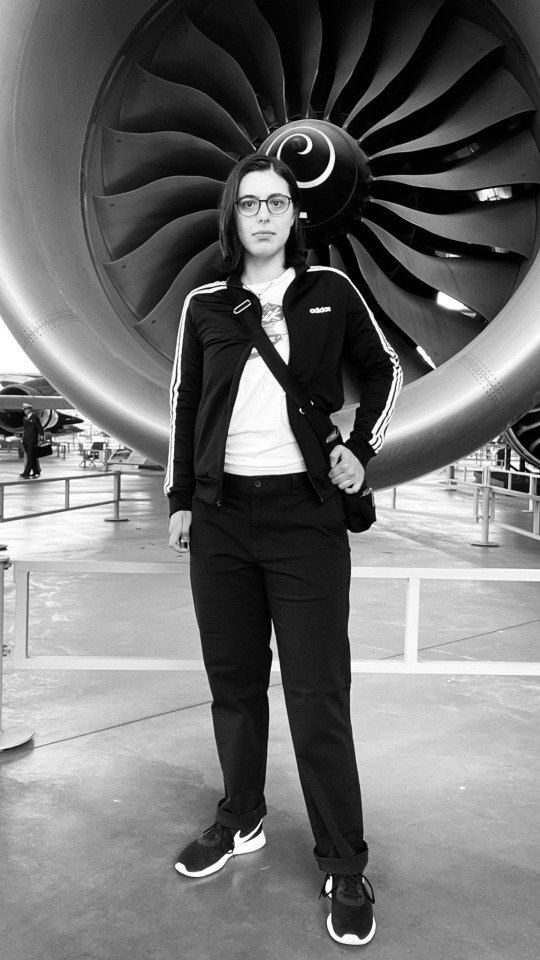
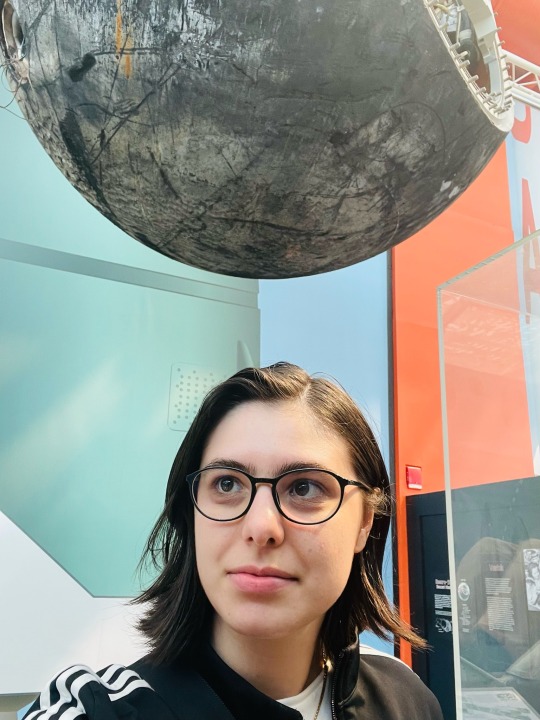

Day at the Seattle Museum of Flight 🚀🛩️
#also here's what i look like lmao#standing proudly in front of a jet engine that could easily shred me to pieces#(thankfully was inactive and only for display)#mod's face#photos#soviet space program#vostok 1#sputnik#soyuz#yuri gagarin
11 notes
·
View notes
Photo


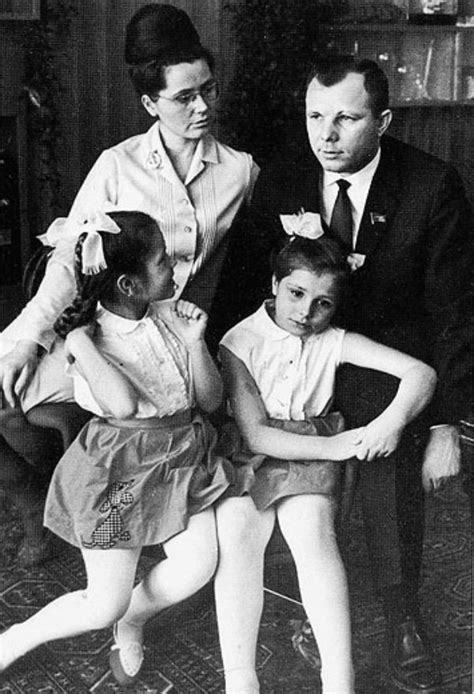
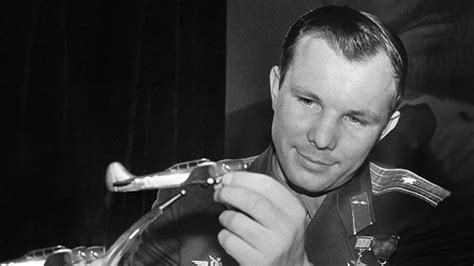
Yuri Alekseyevich Gagarin was a Soviet pilot and cosmonaut who became the first human to journey into outer space. Travelling in the Vostok 1 capsule, Gagarin completed one orbit of Earth on 12 April 1961
9 notes
·
View notes
Text
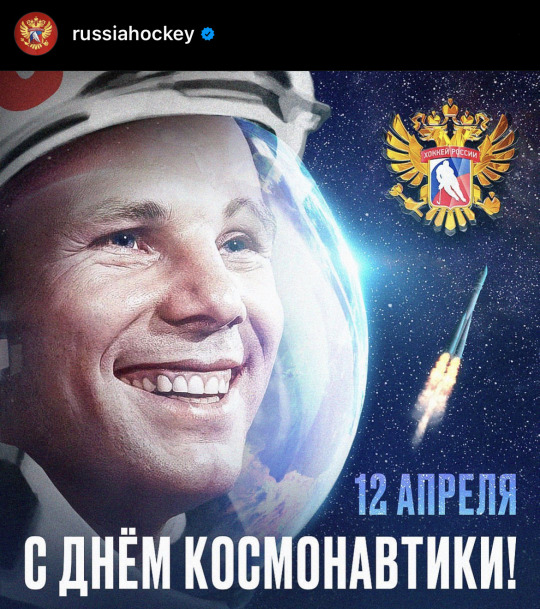
С Днём космонавтики! Happy Cosmonautics Day!
#день космонавтики#cosmonautics day#yuri gagarin#vostok 1#ice hockey federation of russia#international day of human space flight#international day of aviation and cosmonautics
3 notes
·
View notes
Text
His route took him across the Siberian wastes and the Pacific Ocean above the Hawaiian islands, past the tip of South America and into the South Atlantic, where he was greeted by a second sunrise before a 42-second de-orbit burn over the Angolan coast slowed Vostok 1 into a parabolic orbit and an 8-g deceleration inside Earth's thickening atmosphere.

"Human Universe" - Professor Brian Cox and Andrew Cohen
#book quotes#human universe#brian cox#andrew cohen#nonfiction#vostok 1#yuri gagarin#space exploration#siberia#hawaii#pacific ocean#south america#atlantic ocean#south atlantic#angola#orbit#parabola#cosmonaut
2 notes
·
View notes
Text

2 notes
·
View notes
Text
"The Earth was Bluish"
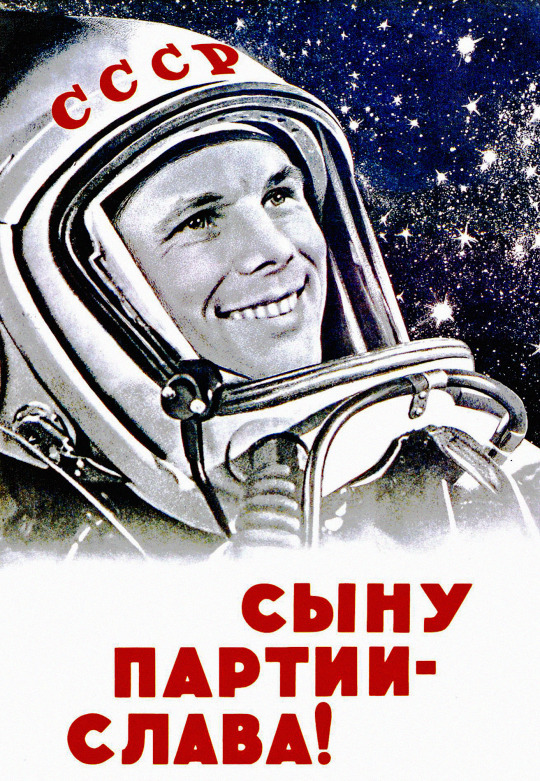
1961年 - ソ連が、ユーリイ・ガガーリンが乗った人類初の有人宇宙船「ボストーク1号」を打ち上げ
0 notes
Text
Every now and then i remember that the first launch of the space shuttle was on the 20 year anniversary of Yuri Gagarin going to space for the first time.
Heres the best part, it was entirely coincidental. A problem with the shuttle Columbia had presented itself and they delayed for 2 days.
What seems like a celebration of human space travel is really just a funny thing that happened that one time
#space#space shuttle#vostok 1#yuri gagarin#columbia#okay but like im still going to think of it as a planned thing because the celebration of the scientific endeavor makes me feel better#than when I remember the cold war happened
1 note
·
View note
Text
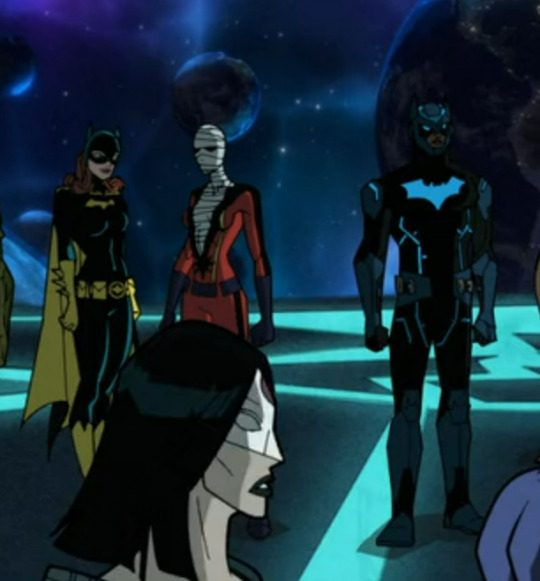
There's a lot of old and obscure heroes here along with some better known ones but I gotta know, is that Batwing?! Batwing was one of the few good things about CW Batwoman
#batwoman#kate kane#negative woman#Valentina Vostok#Tatsu Toro#luke fox#Lucas Fox#justice league crisis on infinite earths#justice league: crisis on infinite earths#justice league crisis on infinite earths part 1#justice league: crisis on infinite earths part 1
5 notes
·
View notes
Text
youtube
I visited the Iron Temple to decrypt an engram the other night, and someone had opened the gate that lets you explore Vostok Observatory and further down the mountain! Decided to record the journey back up, showing the route, the skyline, Vostok and the differences between D1 and D2!
2 notes
·
View notes
Text
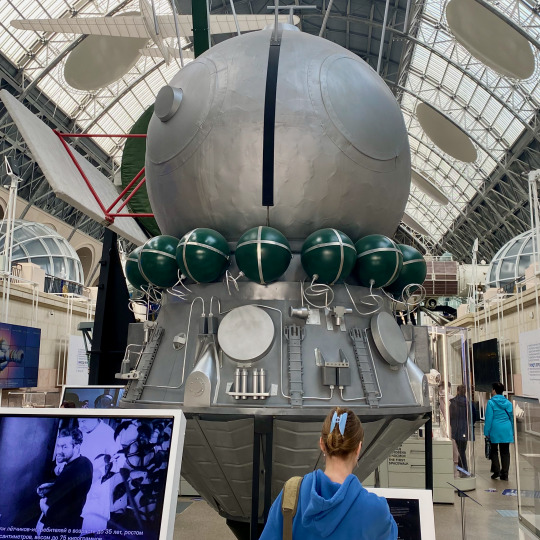
SPACECRAFT VOSTOK-1
SCALE MODEL 1:1
OKB-1 (S.P. KOROLEV ROCKET AND SPACE CORPORATION ENERGIA)
DESIGNER: S.P. KOROLEV BEGINNING OF DEVELOPMENT: FEBRUARY 1958
THE FIRST MANNED SPACECRAFT
On April 12, 1961, Yuri Alekseyevich Gagarin completed the world's first space flight onboard the Vostok-1. In total, six manned launches of spacecraft of this series were completed, all of which were successful. During the flights, the effects of weightlessness on the state and performance of the human body were studied, spacecraft design principles were tested and structures and systems were perfected. The habitable size of the Vostok is only 1.6 cubic meters. Valery Bykovsky spent the most time in the confined space of the spacecraft. His flight on the Vostok-5 lasted 4 days 22 hours and 56 minutes
Museum of Cosmonautics (Moscow)
0 notes
Text

Man Enters Space - April 12th, 1996.
"Sixty three years ago today, Soviet cosmonaut Yuri Alexseyevich Gagarin became the first human in space. On April 12th, 1961, his remotely controlled Vostok 1 spacecraft lofted him to an altitude of 200 miles, and carried him once around planet Earth. Strictly a passenger, his onboard controls were locked out by a secret combination - in case of an emergency he carried the combination in a sealed envelope. After reentry, Gagarin ejected from the Vostok at an altitude of 20,000 feet and parachuted to Earth. How was the first view from space? He reportedly commented, "The sky is very dark; the Earth is bluish. Everything is seen very clearly". Coupled with other spacefaring accomplishments, this flight seemed to confirm Soviet technological superiority - the first US astronaut would not be launched until almost a month later and then on a comparatively short suborbital flight. Born on March 9th, 1934, Gagarin was an air force jet pilot before being chosen for the first group of cosmonauts in 1960. As a result of his historic flight, he became an international hero and legend. Killed when his MIG jet crashed during a training flight on March 27th, 1968, Gagarin was given a hero's funeral, his ashes interred in the Kremlin Wall."
86 notes
·
View notes
Text

Товарищей с Днём космонавтики!
Отдельные поздравления всем причастным!
Congratulating all friends - especially those involved - with the Cosmonautics Day!
On April 12, 1961 Yuri Gagarin - the USSR cosmonaut, the "Hero of Soviet Union" - became the first man to enter space on "Vostok-1" spaceship.
#День космонавтики#Юрий Гагарин#Cosmonautics Day#Yuri Gagarin#space#праздник#art#illustration#PhantomRin
51 notes
·
View notes
Text
Task Force What? An Incomplete (Yet Still Very Long) Guide to Some of the DCU’s Government Groups [Part 1]
So, you’re reading DC comics and a government agency pops up that you’re reasonably sure doesn’t exist in the real world. Who are they? What’s their deal? Here’s a quick primer on some of the groups that you may encounter.
A few notes and disclaimers: This writeup is primarily based on post-Crisis, pre-Flashpoint/New 52 comic canon. I’ve tried to note every exception to that general rule. Also, several of these groups and comics use historical markers tied to the real world, which makes less and less sense as we-as-readers get farther away in time from when these comics were originally published. DC eventually stopped using real people and events so frequently in comics to help with their timelessness, but I’m going to include the historical figures and times as depicted in the source material, even if that means the same Batman is supposed to have been active in the 70s and also in 2011. Just don’t worry about it.
This writeup is split into three parts, described below. This section is the most dense, dealing with the history of 13 agencies, some of their key players, and the organizations' general missions. Special thanks to my editors and beta readers for helping me shape this up.
Part 1: Organization Descriptions and Histories
Task Force X
Argent
The Suicide Squad
Checkmate
Central Bureau of Investigation
The Agency
Project: Peacemaker
Department of Extranormal Operations
All Purpose Enforcement Squad
Project Cadmus / The DNA Project
Human Defense Corps
A.R.G.U.S.
Spyral
Part 2: Timeline
Part 3: Reading Suggestions
Task Force X
One of the most famous of DC’s government groups, Task Force X is sometimes used interchangeably with “The Suicide Squad.” However, that’s (at least originally) not quite accurate! Task Force X was a government program that housed two clandestine programs: Argent and The Suicide Squad. Task Force X was originally started in the 50s by President Truman to make up for the disappearance of the Justice Society of America after Senator McCarthy summoned them before his House of Un-American Activities Committee and tried to force them to unmask. Task Force X was designed to deal with the “extraordinary” (read: metahuman and alien) threats that might face the U.S. government. Argent was the domestic program, while the Suicide Squad was international. The leader of Argent took his team and disappeared in the 60s, while the Suicide Squad disbanded soon after due to budget cuts.
Task Force X would be revived in the 80s when then-congressional aide Amanda Waller would present to President Reagan a plan to revitalize The Suicide Squad, this time utilizing supervillains for high risk, clandestine missions in exchange for reduced prison time. Waller also envisioned the reorganization of intelligence group The Agency, which would become the intelligence-focused division of Task Force X. The Agency would be led by former Doom Patrol member Valentina Vostok until its reorganization into Checkmate, at which point Harry Stein was named Checkmate’s King. Although Central Bureau of Intelligence leader Sarge Steel had significant reservations about Task Force X, the President ultimately approved the project.
After an inter-departmental war known as the Janus Directive, Task Force X was dissolved as an umbrella organization. The Suicide Squad and Checkmate were made fully independent of one another, with Sarge Steele assuming direct control of Checkmate from Waller, who stayed on as the director of the Suicide Squad.
Argent
Argent was the U.S. based division of the original, 50’s Task Force X that dealt with domestic and civilian “extraordinary” encounters. Originally led by a man named only as “Control,” Argent went underground after Control killed a man connected with the assassination of President Kennedy in 1963. Control’s vision for this new, even more secretive Argent was an internationally focused spy agency for justice, though little is known about how effective he was. Presumed defunct, Argent was not revived when Amanda Waller proposed her new Suicide Squad. Eventually, the new Suicide Squad made contact with the remenants of Argent, and were witness to the ultimate end of the program.
The Suicide Squad
Originally, the Suicide Squad was the self-given name of WWII platoon with a depressingly high fatality rate. Over the course of the war, the squadron found themselves on Dinosaur Island, which certainly didn’t help those numbers. Richard Montgomery Flag Sr. was brought in to help lead the group, turning the squadron around into a highly decorated division of the Army.
In 1951, after the Justice Society was driven underground, President Truman created Task Force X to be able to combat “extraordinary” threats now that there were no costumed heroes to rely on. Truman requested that Flag Sr. lead The Suicide Squad, which focused on international threats. This group was largely composed of veterans of the WWII Squadron S. This version of the Suicde Squad was disbanded after the death of Flag Sr.
A third version of the Squad was created by General Stuart, tapping Rick Flag Jr. to be its leader. This team continued to deal with extranormal threats, but disbanded after a mission in Cambodia that saw the loss of half the squad. It was also revealed that regardless of the fatalities, budget cuts demanded the end of the program.
The most famous version of the Suicide Squad was proposed by congressional aide Amanda Waller to President Reagan in the 1980s, following the Legends event. Waller envisioned a revival of Task Force X as an umbrella program, with the new Suicide Squad being staffed by incarcerated supervillains. These villains would undertake high-risk, clandestine operations in return for reduced prison sentences. Part of the appeal of this model was the deniability: in the event that an operation went poorly, the government could simply blame it on the supervillain. President Reagan approved the program–Waller was the leader of Task Force X, which included both the Suicide Squad and The Agency, which was soon remade into Checkmate.
This Suicide Squad operated out of Belle Reve penitentiary, which was a maximum security prison specializing in holding supervillains. The initial administration of the Suicide Squad consisted of Amanda Waller as its director, Belle Reve’s warden John Economos, psychologist Simon LaGrieve, bureaucratic assistant Flo Crawley, and pilot Briscoe. Waller brought in Rick Flag Jr. to serve as her field leader and Ben Turner, the Bronze Tiger, as second in command. While the Squad certainly lived up to its name and reputed high mortality rate, notable team members include Eve Eden, Nightshade; Floyd Lawton, Deadshot; June Moone, Enchantress; and George Harkness, Captain Boomerang. I’m not going to spoil the whole Oracle plot for you, but know that Barbara Gordon actually debuted as Oracle in the pages of Suicide Squad, so consider this your sign to go read Suicide Squad (1987).
After the events of The Janus Directive, Task Force X was dissolved as an umbrella organization. While Waller was left as the director of the Suicide Squad, she no longer had any leadership in Checkmate, which had passed into the control of Sarge Steel, director of the Central Bureau of Investigation.
After a number of missions, Waller eventually disbanded the Suicide Squad, finding herself disillusioned with the Squad’s goals. However, because this is comics, the Suicide Squad would not stay dead for long. Waller would periodically create new incarnations of the Squad to address spontaneous issues that would arise, often crossing over with other superheroes' adventures. During Lex Luthor’s presidency, Waller would be appointed Secretary of Metahuman Affairs, taking Sarge Steel’s place.
After Checkmate was rechartered as an United Nations organization, Amanda Waller took a position as the White Queen. To limit conflicts of interest, this effectively meant that the Suicide Squad was permanently disbanded, as Waller was prohibited from operations and could not be involved in the leadership of both organizations. This didn’t stop her, however, and Waller formed a new incarnation of the Suicide Squad that began Operation: Salvation Run. This project involved rounding up all supervillains and deporting them to a prison planet via Boom Tube (yes, really) where they were supposed to stay indefinitely. Waller was eventually ousted from Checkmate, but not before she and her Squad managed to deport the majority of Earth’s villains. The Suicide Squad would have to confront its ghosts during the Blackest Night event, when zombified fallen members of the Squad came after living members, but further adventures were cut off by Flashpoint.
Checkmate
Checkmate started from The Agency, a quasi-independent intelligence focused division of Task Force X led by former Doom Patrol member Valentina Vostok. Vostok brought in former NYPD lieutenant Harry Stein, who soon reorganized the group into Checkmate. Borrowing from chess’ hierarchy, Stein was King, working with his Queen counterpart to coordinate various agents. Bishops oversaw Rooks, who planned missions for support agents–Pawns–and special agents–Knights. Checkmate operated out of Konig Industries in Shelby, Virginia until the events of the Janus Directive. During that event, Checkmate lost roughly 40 Knights and its Konig cover was blown. With only a third of its agents, Checkmate was subsequently forced to relocate to a NORAD base in Colorado.
Harry Stein resigned as head of Checkmate after his son was shot, leading Sarge Steel to promote Phil Kramer to King and Kalia Cambell to Queen. They would lead Checkmate against Jade Nguyen, the assassin known as Chesire, during the time she took control of several nuclear warheads and bombed the nation of Qurac. At some point Checkmate would establish their division between black side, which ran operations, and white side, which was primarily intelligence.
Bishop Jessica Midnight recruited Sasha Bordeaux, Bruce Wayne’s former bodyguard, into Checkmate. Bordeaux had been imprisoned due to suspicion that she was an accomplice to Bruce Wayne's alleged killing of Vesper Fairchild. Checkmate faked Bordeaux’s death in prison and provided her with plastic surgery to assume a completely new life as a Checkmate operative.
After Kramer, former Knight David Said would become the new King of Checkmate. He would lead Checkmate against Batman in Gotham City, a campaign that saw them abduct Helena Bertinelli, the Huntress, and install her as Queen in an attempt to have her share secrets from Batman. This arrangement was actually a plan between Batman and Huntress, however, and Bertinelli ended up serving as a mole for Batman on Checkmate.
For this next section, I choose to believe that Checkmate was a victim of Superboy-Prime’s altering of reality in the leadup to Infinite Crisis. Checkmate is suddenly headed by Maxwell Lord, Said and Bertinelli are nowhere to be seen, and Lord’s motivations are massively different from any of his previous appearances. Regardless, under Lord, Checkmate amassed information on every metahuman on Earth with plans to eliminate them. To do this, Lord was given access to the Brother Eye satellite, and together they controlled over one million OMACs–civilians that had been injected with nanotechnology to make them unwitting cyborg sleeper agents. When Ted Kord, the Blue Beetle, discovered what Lord had been up to, Lord killed him and instructed Bordeaux to dispose of the body.
Sasha sent Blue Beetle’s goggles to Batman, alerting him of Kord’s death. Once Lord knew that Batman was on his tail, he accelerated his plans, using his mental manipulation powers to take control of Superman and send him on a rampage to keep other heroes occupied. When Wonder Woman caught up with Lord, she bound him in her Lasso of Truth and commanded him to tell her how to set Superman free. The only option he gave her was for him to die, so Wonder Woman snapped his neck. Upon Lord’s death, Brother Eye immediately activated all OMACs and began the King_Is_Dead protocol, which involved killing every current Checkmate agent. Bordeaux, who had been imprisoned by Lord after he discovered her subterfuge, escaped, though not before her own unique OMAC programming activated. Lord had intended for her, as his Knight, to be a special type of OMAC, leaving her somewhere between human and machine. Later, Bordeaux would team up with Batman and other heroes to take down Brother Eye.
After Infinite Crisis, Checkmate was recharted by the United Nations to be an international group with a stronger system of checks and balances. Checkmate operated under a system of twos: two Kings and two Queens, with a Knight and Bishop for all four royals. Most specifically, the U.N. charter set out a Rule of Two: each position had to be balanced with meta and non-metahumans. As before, Black side was operations while White was intelligence. Bishops advised their royals, while Knights were special agents. Rooks were an elite Black Ops unit, while numerous Pawns were standard agents.
At the time of its chartering, the new Checkmate had the OMAC enhanced Bordeaux as its Black Queen, Taleb Beni Khalid as its unpowered Black King, JSA Green Lantern Alan Scott as White King, and Amanda Waller as White Queen. After Scott resigned as White King his Bishop, fellow JSA member Michael Holt–Mister Terrific, took his place.
This Checkmate frequently clashed with Kobra, the international cult intent on bringing a new age of chaos to the world. However, they also had a non-insignificant amount of infighting. Significantly, Waller was forced out as White Queen after she tried to preemptively remove Bordeaux and Holt, knowing that they were getting close to uncovering her illicit Suicide Squad and their Operation: Salvation Run.
After the events of Brightest Day, Maxwell Lord returns from the dead and uses his power to make nearly everyone on Earth forget about him. He immediately begins to try to regain control of Checkmate, beginning a misinformation and discrediting campaign against Checkmate’s leadership.
Central Bureau of Intelligence (C.B.I.)
The Central Bureau of Intelligence is a sort of corollary to the Federal Bureau of Investigation within the DC Universe. The organization primarily focuses on information gathering from domestic and international sources, then utilizing that information for operations. However, while other groups are focused on “extranormal” threats, the CBI is primarily concerned with “normal” missions. When special assignments do come up, special agents are dispatched.
The CBI was known to be active when Task Force X was being revived by Amanda Waller. While Sarge Steel was both known to be involved in the CBI and important enough to sit in on Waller’s meeting with the President of the United States, it is not clearly stated that he was the director of the CBI at that time. However, Sarge Steel would officially be the director of the CBI by the time of the Janus Initiative. Despite the massive reorganization at the time, the CBI was left largely alone. Steel would be promoted to the Director of Metahuman Affairs, a Cabinet level position wherein he would oversee all metahuman related operations for the federal government.
Among the most notable CBI agents are the aforementioned Sarge Steel, King Faraday, and former Teen Titan Roy Harper. After leaving the Titans, Harper would work for the CBI as a special agent–it was during this period he met Jade Nguyen, the assassin known as Chesire, and conceived their daughter Lian.
Eventually, the CBI would be incorporated into the Department of Extranormal Operations.
The Agency
The Agency was a group led by former Doom Patrol member Valentina Vostok that aimed to monitor superheroes. When Amanda Waller presented her plan to reform Task Force X, the Agency was reorganized into Checkmate. Among its divisions was Project: Peacemaker.
Project: Peacemaker
Project Peacemaker was the program that created and maintained Christopher Smith’s activities as Peacemaker. Originally, Project Peacemaker was a division of the Agency. When Task Force X was revived under Amanda Waller’s proposal, the Agency was reorganized into Checkmate, and Project Peacemaker is implied to have been made its own entity. However, when Task Force X was dissolved after The Janus Directive, Project Peacemaker became folded into Checkmate under the supervision of Sarge Steel.
The Department of Extranormal Affairs (D.E.O.)
In terms of real-world publication, the DEO began in 1998 as DC’s effort to begin consolidating all of the various federal metahuman organizations under one umbrella. In this author’s opinion, this was for the better.
The Department of Extranormal Operations is the U.S. government’s most modern and comprehensive agency to assess and combat metahuman threats through intelligence gathering, field operatives, and their own research.
The DEO conducts extensive research on metahumans and extranormal entities, with various degrees of transparency or consent. The DEO has been depicted to hold individuals against their will in order to study them, to the point of sending either their own agents or other affiliated groups to hunt down subjects that escape. This research seemed to be, in its early depictions, its primary focus. However, the DEO would take broader forays into intelligence, using that information for good… and sometimes to blackmail heroes into working for them.
In most depictions, the DEO is led by Director Bones, a former member of Infinity Inc, who reports to the federal Director of Metahuman Affairs. Bones is the direct supervisor of operative Cameron Chase, who has proved herself an exceptional agent. Through Chase, Kate Spencer–the Manhunter–was brought in to work for the DEO for some time.
The DEO is expansive enough to have several subdivisions within it. One such group was the Department of Metahuman Affairs, where Wonder Woman would work after Infinite Crisis. This subdivision would focus specifically on gathering and preparing intelligence on active metahumans, should the government need it. This subdivision would be led by Sarge Steel, who had left the White House upon the election of Lex Luthor and Luthor’s subsequent appointment of Amanda Waller to Secretary for Metahuman Affairs.
Another group known to be active during Luthor’s presidency was Knightwatch, a more militaristic division that responded to possible metahuman attacks on federal personnel and buildings.
The DEO’s research facilities are detailed in various comics across the 90s. It is gradually revealed that the DEO either maintains or sponsors a variety of training camps and research facilities, sometimes called “orphanages,” that hold metahumans under various states of duress. One example is Secret, the Young Justice member who is shown escaping from a DEO orphanage, and later gets Young Justice’s help shutting down similar experimentation programs. A group of metahumans who escape from the DEO collectively get taken in by the Titans. Conversely, some of the individuals who go on to be the Relative Heroes are depicted to be in a more traditional fostering environment, though it is still connected to the DEO.
Within the continuity of the Supergirl TV show, as part of the Arrowverse, the DEO is a governmental organization that specifically deals with extraterrestrial threats and encounters.
All Purpose Enforcement Squad (A.P.E.S.)
The All Purpose Enforcement Squad is an international, interdepartmental group of highly trained special agents. APES features most prominently in the Young Justice series, represented by Donald Fite and Ishido Maad.
While APES has connections to international organizations such as Interpol and Scotland Yard, they seem primarily U.S. based, as APES was the primary group trying to recover Secret, a metahuman who escaped from a DEO research facility.
Project Cadmus
Project Cadmus, sometimes also known as the DNA Project, is a government supported genetic research lab. Cadmus is involved with cloning and gene sequencing for the purpose of creating new life, with their most famous creation being Superboy.
Originally led by Director Paul Westfield, Cadmus employed various scientists engaged with genetic manipulation. The most notorious of these scientists was Dabney Donovan, who created “DNAliens” with inhuman powers. These DNAliens include Dubbilex, the grey skinned, horned telepath who would serve as a mentor to Superboy. Cadmus also employed the adult members of the original Newsboy Legion. These adults cloned themselves to create a new Newsboy Legion, and additionally cloned former NYPD officer Jim Harper–the original Guardian. This new cloned Guardian would serve as head of security of Cadmus.
Donovan was eventually fired from Cadmus due to the extremity of his experiments. Donovan would go on to align himself with The Agenda, another genetic lab responsible for their own Superboy clone: Match. Cadmus would also have an enemy in the form of the Evil Factory, led by Mokkari and Simyan, servants of Darkseid.
After a virus affecting clones and DNAliens breaks out, Cadmus began to receive intense scrutiny. A purification by fire was attempted, with missiles aimed to destroy sections of Metropolis and stop the virus. After the missiles were stopped, Donovan revealed himself to be the mastermind of the virus and killed Westfield, leading Mickey Cannon to be named the new administrative director of Cadmus. This scrutiny forced Cadmus to withdraw from the public eye, going deeper underground.
Under Cannon, Dabney would be kept imprisoned in Cadmus to serve as a scientific advisor under armed guard. Cannon also brought in Serling Roquette to be the new head of genetics–Roquette would eventually be responsible for curing Superboy of the genetic quirk that kept him from aging. Cadmus would continue to withdraw from attention, especially under the presidency of Lex Luthor.
Human Defense Corps
The Human Defense Corps was a group started under President Luthor’s administration with the goal of having an entirely non-metahuman taskforce that could respond to meta-level threats. This was in line with Luthor’s goal of reducing dependency on superheroes, and as such only recruited from decorated military veterans.
A specific subgroup within the Human Defense Corps was Squad K, a division specifically armed and trained to take on Kryptonian targets.
A.R.G.U.S.
You may have noticed that I didn’t put what A.R.G.U.S. stands for up above. That’s because sources disagree. According to the wiki, A.R.G.U.S. stands for Advanced Research Group Uniting Super-humans. A.R.G.U.S. was created post-Flashpoint to be a governmental organization associated with the Department of Homeland Security. Specifically, A.R.G.U.S. aims to support super- and meta-human endeavors, rather than having an antagonistic relationship with the superhuman community.
A.R.G.U.S. took on a life of its own within the TV Arrowverse shows, where it’s called the Advanced Research Group United Support. There, A.R.G.U.S. is the de facto government agency for dealing with metahuman threats. It was formerly led by Amanda Waller before leadership passed to Lyla Michaels.
Spyral
Before I start to give the details on Spyral, I have to disclaim a few things about it. Spyral was first mentioned in the New Earth timeline, during Grant Morrison’s time with Batman Incorporated (2011). This was immediately before Flashpoint and the New 52 reboot. However, this run of Batman Incorporated kept going within the New Earth continuity past when Flashpoint happened, meaning that the comics had to disclaim that they were still the old continuity, even though the reboot happened. But then! Batman Incorporated (2012) was a direct sequel to the New Earth run, even though this Volume 2 explicitly happens in the post-reboot continuity.
All of this to say, Spyral is an organization that has roots in the New Earth continuity, but was largely fleshed out in the post-Flashpoint universe. Because of the relative lack of information in the pre-Flashpoint continuity, however, we can assume a lot of the later established details can be retroactively applied.
Technically, Spyral is not a U.S. agency. Originally, Spyral was founded during the Cold War to be a United Nations affiliated spy group. The U.N. made former Nazi spy Otto Netz, under the pseudonym Agent Zero, the head of the organization. He was subsequently tasked with recruiting Spyral’s agents and building the organization for the U.N.
Spyral continued into the 80s, at which point Netz was revealed to be a double agent and imprisoned in a lighthouse. Though the organization seemingly collapsed at that point, Spyral’s operations continued. At some point before his imprisonment, Netz recruited Gotham City socialite Kathy Webb Kane into Spyral and tasked her with discovering the identity of the Batman. Kathy developed the Batwoman persona to get close to Batman, though the revelation that Netz was her father caused her to break off contact with both Batman and retreat from Spyral. Kathy Webb Kane was believed to have been killed by Ben Turner, the Bronze Tiger, during his period of being controlled by the League of Assassins.
Netz would be broken out of his imprisonment by the Leviathan Organization, which is a militaristic group led by Talia al Ghul, after her estrangement from her father Ra’s al Ghul. Leviathan seeks to undo much of modern society in order to rebuild the world in a “better” way. Talia set Netz up as Doctor Dedalus to combat Batman and his Batman Incorporated initiative, designing elaborate traps across the globe to keep Bruce Wayne and his operatives occupied. Netz was eventually killed within one of his traps by Damian Wayne, who was attempting to save his father.
It was revealed after Netz’s death that Kathy Webb Kane was still alive, and had faked her own demise in order to become the secret headmistress of Spyral. After Netz’s death, the U.N. officially reactivated Spyral in order to combat Leviathan’s continued growth.
Spyral operates out of St. Hadrian’s Finishing School for Girls. Initially in the New Earth continuity, the school had been a Leviathan facility, training young women as infiltrators and assassins. It was the site of Stephanie Brown’s mission as Batgirl on behalf of Batman Incorporated, and she and Batman managed to stop the Leviathan plot. In the post-Flashpoint continuity, St. Hadrian’s is Spyral’s base, where elite students are trained as spies. It’s assumed that Spyral just took control after ousting Leviathan.
After Dick Grayson was publically unmasked as Nightwing, he joined Spyral to investigate the organization. During this period, he worked with Helena Bertinelli, who was working as the Matron of Spyral. Grayson would continue as Agent 37 of Spyral for some time, until his identity was restored. At that point, he and Bertinelli both returned to Gotham to take up the mantles of Nightwing and Huntress, respectively. With Bertinelli’s departure, directorship of Spyral and the title of Patron passed to Agent-1, the operative known as Tiger.
59 notes
·
View notes
Text
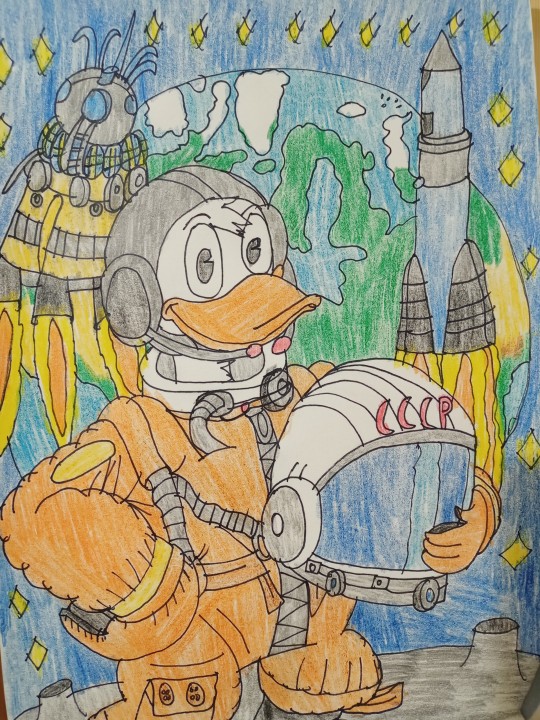

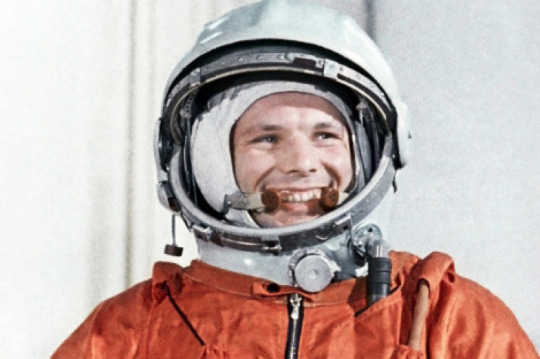



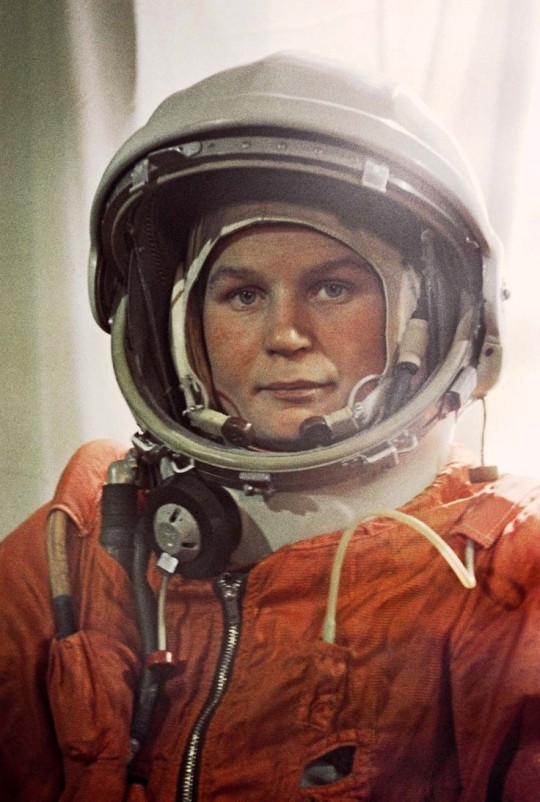
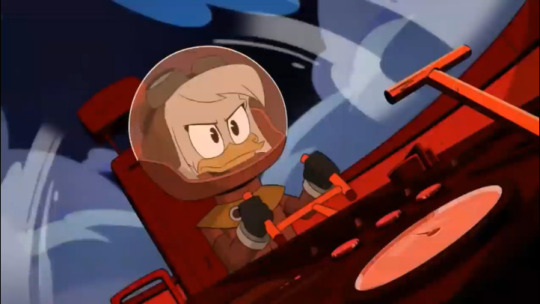
Donald Duck as cosmonaut as Yuri Gagarin and Della Duck as cosmonaut Valentina Tereshkova - Tribute to Space Race and gift for my friend - Ducktales 2017
I wouldn't have even drawn this, if this wasn't intended as a gift for a friend of mine who really likes ducks in space adventures and spacesuits.
I drew this on the occasion of the anniversary of when the first man, Yuri Gagarin, went into space on April 12, 1961, with the Vostok 1 rocket, and since then the journey of man in space begins. And I drew Donald Duck as a redraw from the comic cover of Topolino comics from 2015, drawn by Alessandro Perina, in which Donald Duck is like Yuri Gagarin, but in the then Soviet spacesuit (Vostok 1 spacesuit). Yes, I drew it to be close to Ducktales 2017 style, but in my own style, since I think somehow Ducktales 2017 suits that kind of space action. Yes, behind Donald you can see the rockets and aircraft of the Vostok program, as well as the planet Earth. By the way, the surname Gagarin means wild duck, so it is not surprising that the first man in space was a duck. XD
The next drawing is a redraw of Della Duck as Valentina Tereshkova, who flew in space around planet Earth on June 16, 1963 in the Vostok 6 rocket and became the first woman in space. Yes, I have a bit of a problem to draw Della Duck as a whole in a spacesuit, so I just sketched her, and somehow it fits her role to be like Valentina, and Della always wanted to be an astronaut, otherwise the word astronaut means a star sailor so it does matter that Donald is an astronaut too. Such a brother, such a sister. Behind it you can see the Vostok program rocket as well as the stars and the crescent moon. By the way, both Donald and Della, like Yuri and Valentina, wear the USSR mark in Cyrillic on their space helmets, since they are from the Soviet Union (Yuri Gagarin was born on March 9, 1934 and was the first man in space, while Valentina Tereshkova was born on March 6, 1937 and was the first woman in space). And Della is in Ducktales 2017 style, but in my own way.
I hope you like these drawings and these ideas and and feel free to like and reblog this and please don't anyone copy these same ideas of mine without mentioning me. Thank you! Happy first space flight day!
Also this is my gift for my friend who is a fan of space ducks and I wish him a happy birthday dear @ducksinspaceadventure! I hope you like this!
#my fanarts#donald duck#della duck#ducktales#ducktales 2017#space#space travel#space suits#space suit#yuri gagarin#valentina tereshkova#ussr#soviet union#space race#disney ducks#donald and della#disney duckverse#fanarts#duckblr#artists on tumblr#fanart#ducktales fanart#ducktales fandom#gift for my friend#vostok#my redraw#my style#duck twins#duck siblings#my fanart
32 notes
·
View notes